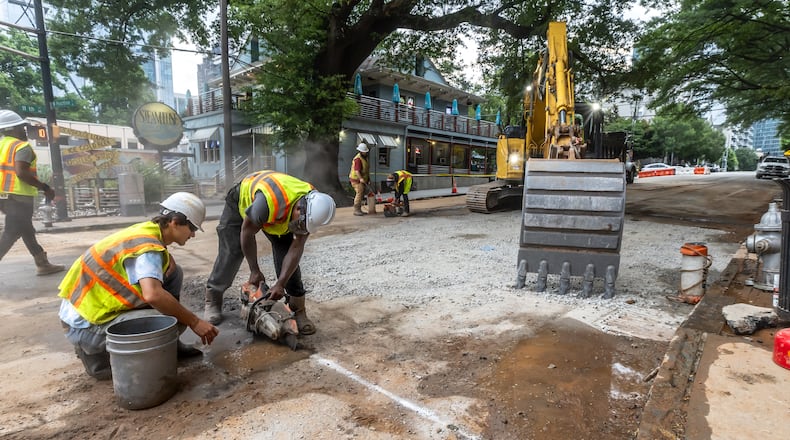As Mayor Andre Dickens celebrated an end to the city’s water crisis, he declared the six-day emergency a “wake-up call” to address Atlanta’s aging water system and those in cities across the country.
On June 5, another city more than 2,300 miles away plunged into its own water crisis as Atlanta crews made the final repairs to its water main breaks.
Calgary, Canada — population 1.6 million — suffered a severe water main rupture that’s cut off more than half the city’s water supply and forced officials to implement water-use restrictions.
To help ensure enough clean water for vital functions like health care and public safety, Calgary residents are under strict rules not to use water frivolously — that means no watering lawns, filling pools, or washing cars. Local officials say the restrictions could extend through early July.
The situation playing out in the neighboring country is laced with similarities to the chain of events that played out in Atlanta.
Vital pieces of pipe needed to repair Calgary’s breaks had to be sourced and transported from San Diego. Similarly in Atlanta, officials had to look out-of-state for the special manual valve needed to turn off the geyser that erupted in Midtown.
Similar to Atlanta, repairs to the initial break in Calgary revealed five more locations in need of repair. And, as the Canadian city is still trying to get the situation under control, officials are launching an independent review of the city’s entire water system. That mirrors the recently announced $1 million study of Atlanta’s water lines to be conducted by the U.S. Army Corps of Engineers.
In a 2021 report, the American Society of Civil Engineers gave the country’s water infrastructure a “C-” rating, calling the system “aging and underfunded.”
“There is a water main break every two minutes and an estimated 6 billion gallons of treated water lost each day in the U.S., enough to fill over 9,000 swimming pools,” the report says.
---
We previously reported that that Atlanta’s e-bicycle rebate program recently opened for applications. The $1 million investment from the city is aimed at making the environmentally-friendly mode of transportation accessible to more people.
The program lottery through the Atlanta Regional Commission, which opened on June 16 and closed June 23, got a staggering response from residents.
According to Council member Matt Westmoreland, who championed the initiative, nearly 8,900 Atlantans applied in hopes of being randomly selected to take part.
At the same time, Atlanta officials recently revisited the city’s relationship with shared e-bikes and scooters, that are popular modes of transportation for both commuting residents and sightseeing visitors.
That mode of transportation is so popular, in fact, that the Atlanta Department of Transportation reported more than 2.1 million shared “micro-mobility” rides taken in the city last year.
Our team’s new intern, Merrill Hart, reported the figures last week as Atlanta City Council renewed its contract with ride-share companies Lime and Bird.
ATLDOT said that shared bike and scooter riders have already logged almost a million miles in 2024, and trips are up 17% year-to-date.
Atlanta was rated a top 10 city for micro-mobility ridership in 2022, and ranks fifth in overall ridership per capita. The highest ridership corridors include the East Beltline Trail, Midtown, Georgia Tech’s campus and Centennial Olympic Park.
---
As always — got tips, tricks or just want to say hello? Email me at riley.bunch@ajc.com.
Credit: Miguel Martinez
Credit: Miguel Martinez
About the Author
Keep Reading
The Latest
Featured





